AWS Certified AI Practitioner
Fundamentals of AI and ML
Introduction to MLOps concepts from design to metrics
Welcome to this detailed lesson on Machine Learning Operations (MLOps). In this guide, we explore the end-to-end MLOps cycle—from data ingestion and model development to deployment, monitoring, and continuous performance enhancement. By integrating practices from DevOps, DataOps, and DevSecOps, MLOps delivers robust and scalable machine learning solutions.
MLOps Lifecycle Overview
MLOps mirrors the traditional software development lifecycle while adapting to the unique needs of machine learning. The process begins with gathering data, problem analysis, and model development. It then progresses to model verification, packaging, release, configuration, hyperparameter tuning, inferencing, and live system monitoring. If performance deviations are detected during monitoring, the model is retrained with new data.
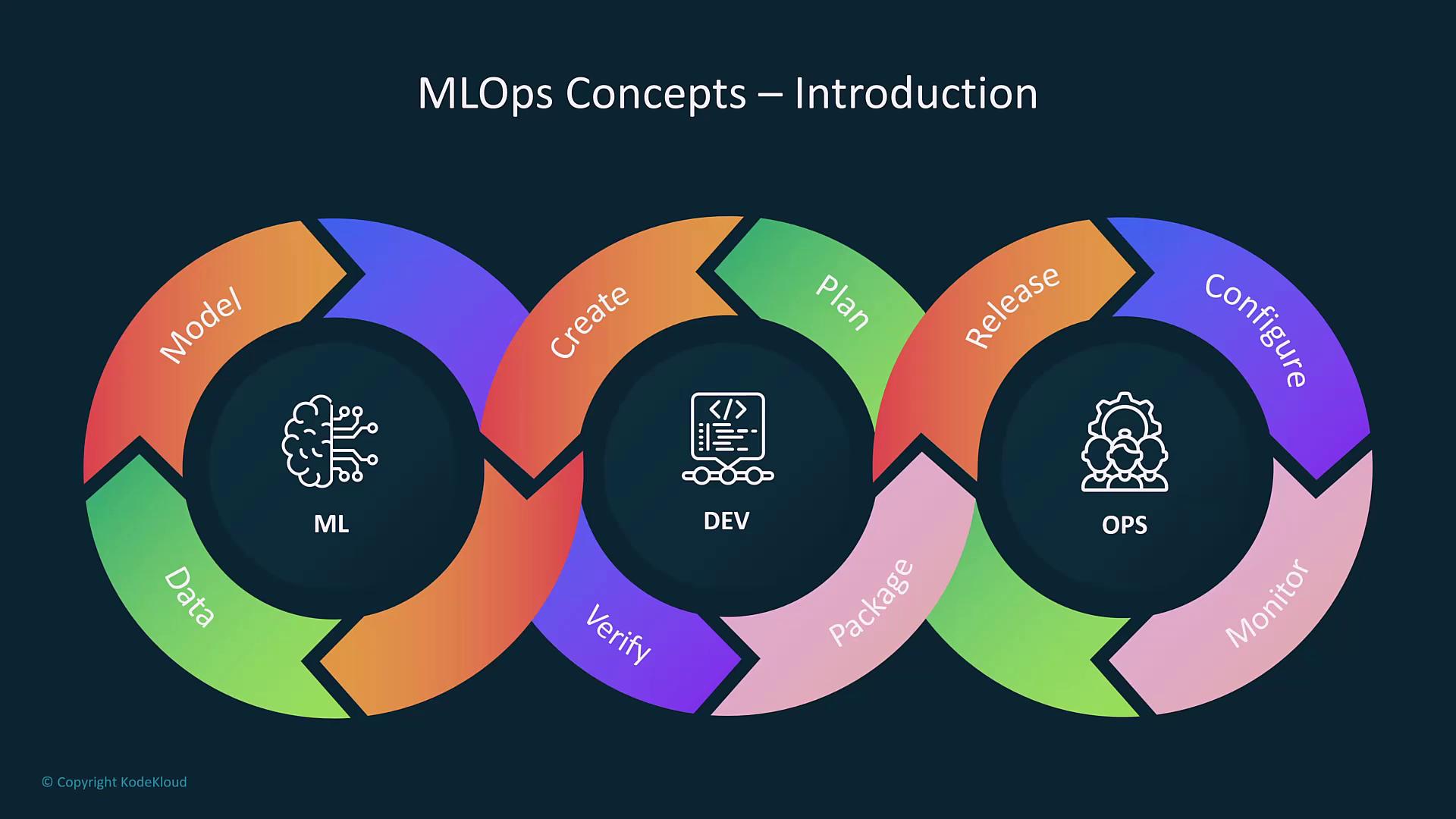
This iterative approach unites data scientists, developers, and operations teams, leveraging CI/CD practices to automate deployment, monitoring, and model updates.
Pipelines and Automation
MLOps pipelines automate all phases of the machine learning workflow—including data collection, model training, validation, testing, deployment, evaluation, and continuous monitoring. For instance, Amazon SageMaker Pipelines employs a CI/CD-style methodology to streamline these processes. Moreover, tools like Apache Airflow (or its managed AWS service) enable the orchestration of complex data processing tasks.
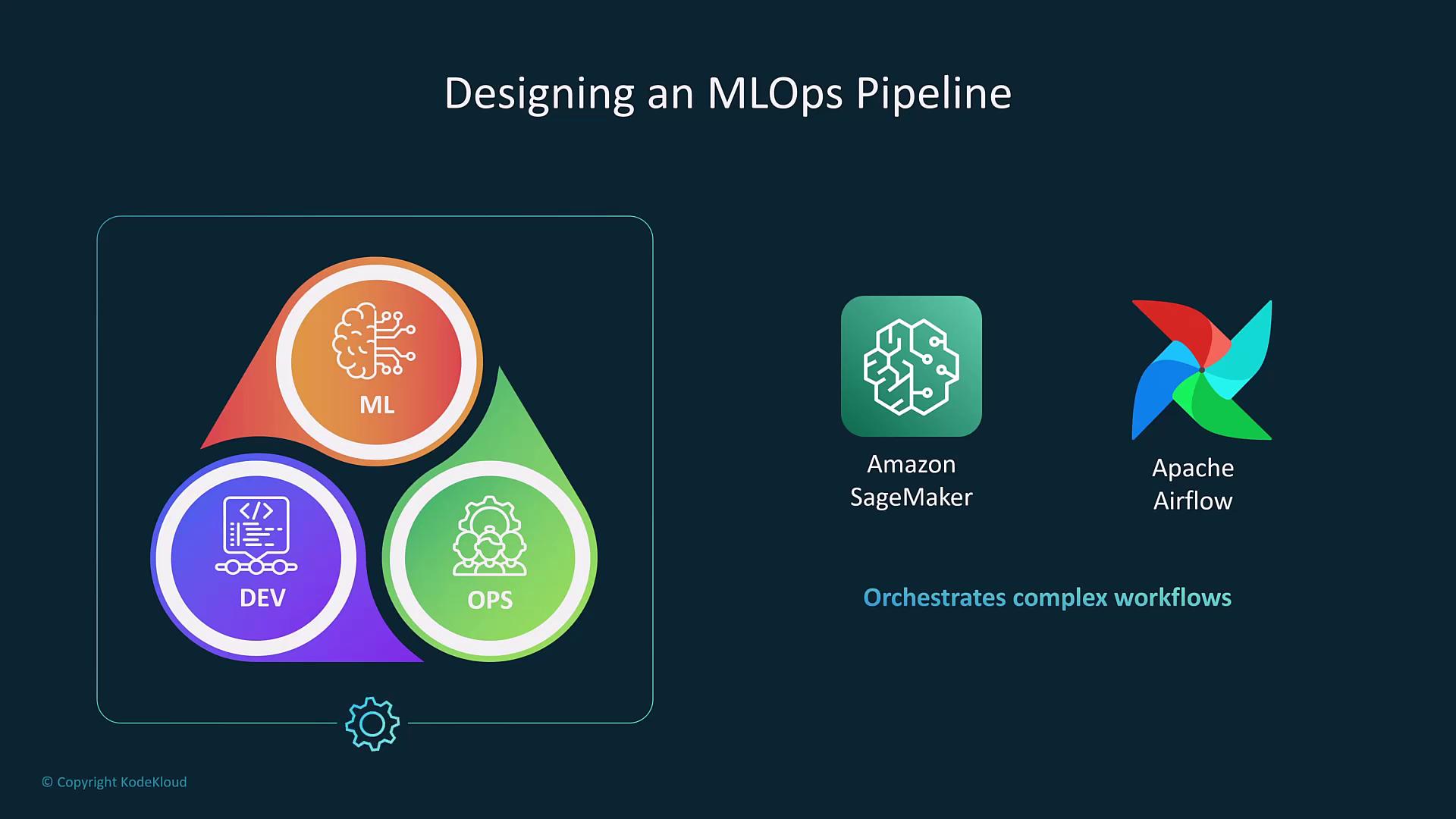
Note
Automated pipelines free up data scientists to focus on experimentation and model optimization, rather than on the underlying orchestration and integration challenges.
Infrastructure Provisioning and Version Control
A critical aspect of MLOps is the setup of reliable infrastructure and robust version control. Key activities include:
- Establishing a Git repository.
- Building and managing artifacts.
- Storing Docker containers using Amazon ECR.
- Triggering AWS Lambda functions via API calls.
- Deploying resources with CloudFormation.
The diagram below illustrates how these components work together to deploy a model artifact into production:
, [AWS Lambda](https://learn.kodekloud.com/user/courses/aws-lambda), and Amazon SageMaker.](https://kodekloud.com/kk-media/image/upload/v1752857379/notes-assets/images/AWS-Certified-AI-Practitioner-Introduction-to-MLOps-concepts-from-design-to-metrics/mlops-infrastructure-as-code-aws-diagram.jpg)
Version control is indispensable for tracking changes in code, data, and models, ensuring reproducibility and enabling rollbacks when necessary. Although AWS CodeCommit is available for legacy support, integration with GitHub or GitLab is now recommended.
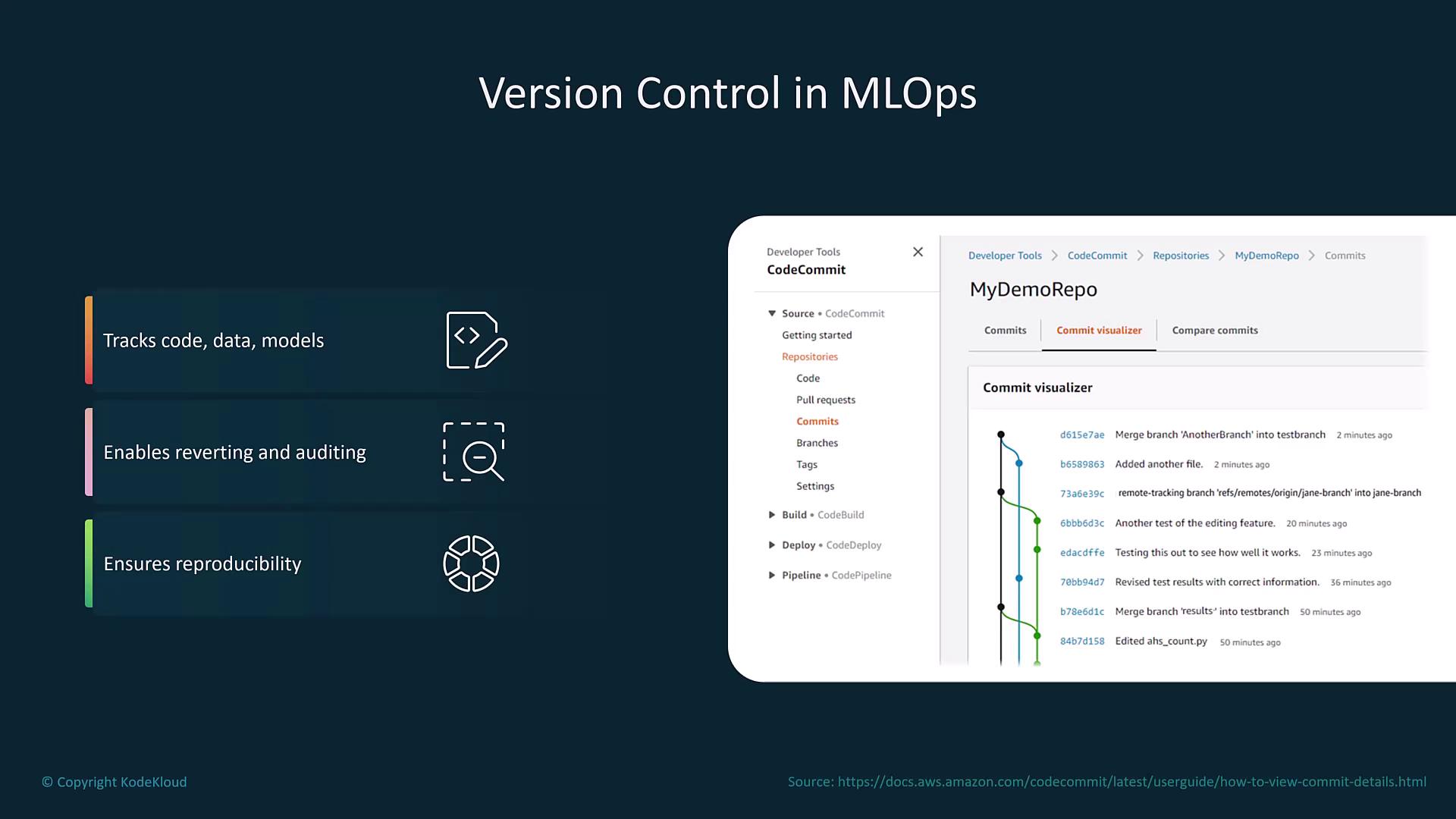
Additionally, the Amazon SageMaker Model Registry helps track and version models similarly to traditional code repositories. It provides insights into training duration, success rates, and overall performance, which enhances model testing and validation.
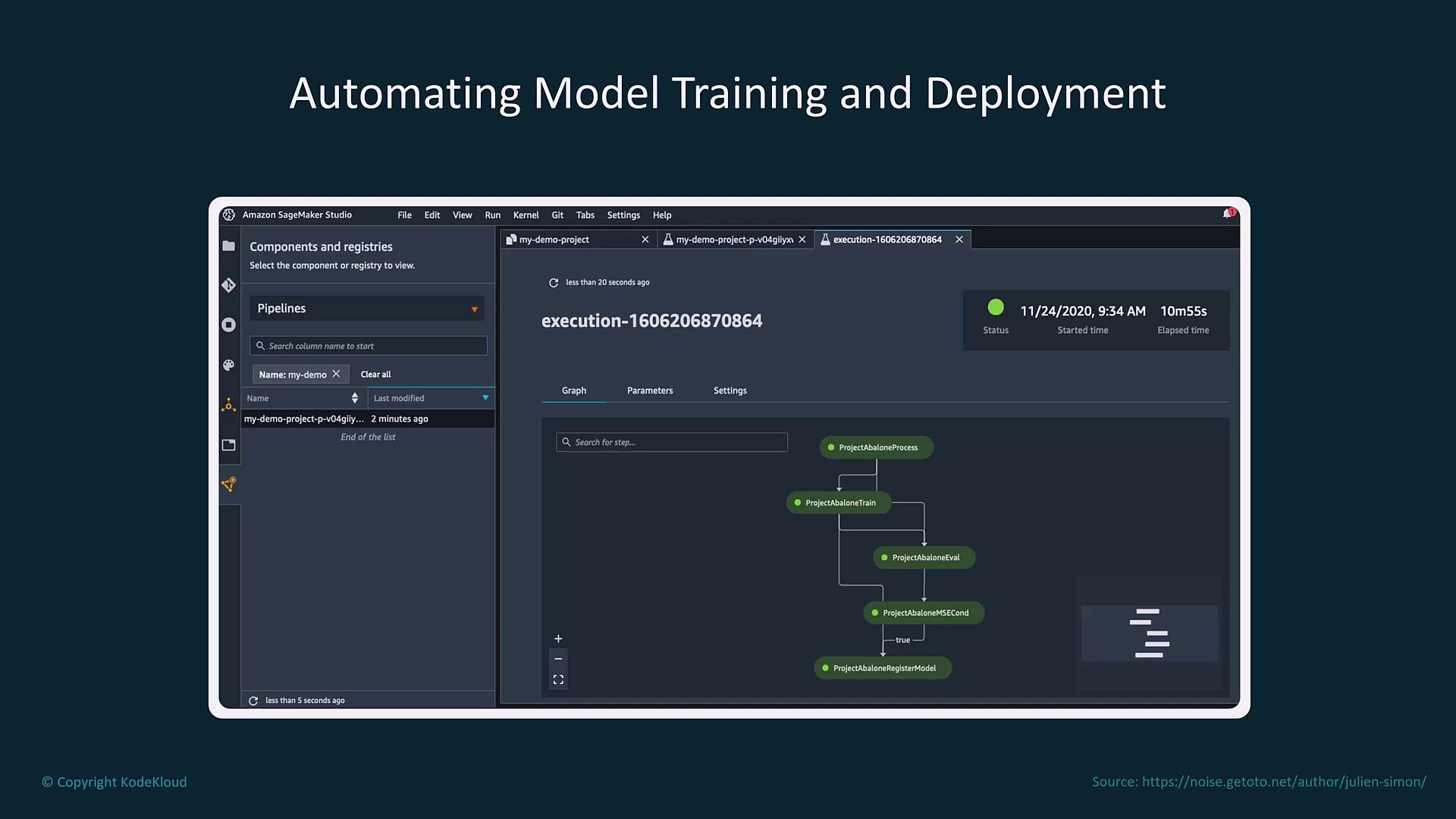
Model Monitoring and Automated Retraining
Continuous monitoring is vital to ensure models perform as expected over time. Tools such as Amazon CloudWatch and SageMaker Model Monitor track performance metrics like error rate, latency, and accuracy. When these metrics exceed predefined thresholds, automated retraining is initiated to update the model with new data.
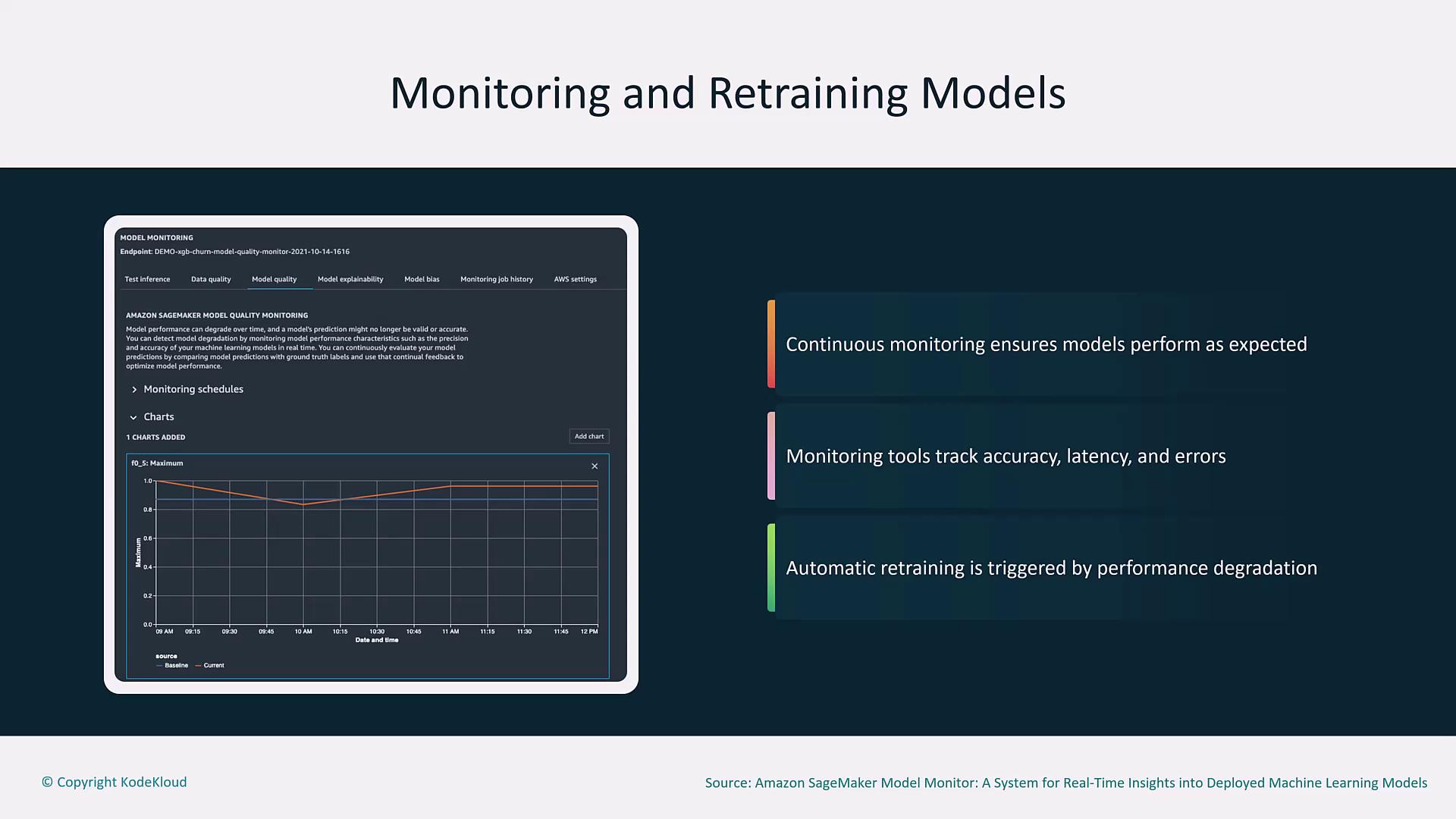
Warning
Ensure that the thresholds for triggering retraining are carefully set to avoid unnecessary model updates or performance degradation.
Furthermore, CloudTrail logs API calls and actions, such as model creation, which supports compliance and auditing standards. Below is an example CloudTrail log entry for a SageMaker model creation event:
{
"eventVersion": "1.05",
"userIdentity": {
"type": "IAMUser",
"principalId": "AIDAJOEXAMPLEUYJWGL",
"arn": "arn:aws:iam::123456789012:user/intern",
"accountId": "123456789012",
"accessKeyId": "ASXAIQEXAMPLEQLKNIQV",
"userName": "intern"
},
"eventTime": "2018-01-02T15:23:46Z",
"eventSource": "sagemaker.amazonaws.com",
"eventName": "CreateModel",
"awsRegion": "us-west-2",
"sourceIPAddress": "127.0.0.1",
"userAgent": "USER_AGENT",
"requestParameters": {
"modelName": "ExampleModel",
"primaryContainer": {
"image": "174872318107.dkr.ecr.us-west-2.amazonaws.com/kmeans:latest"
},
"executionRoleArn": "arn:aws:iam::123456789012:role/EXAMPLEARN"
},
"responseElements": {
"modelArn": "arn:aws:sagemaker:us-west-2:123456789012:model/barkinghamappy2018-01-02T15-23-32-2752-ivrdog"
},
"requestID": "417bdb48-EXAMPLE",
"eventID": "6bf27821-EXAMPLE",
"eventType": "AwsApiCall",
"recipientAccountId": "4444556666"
}
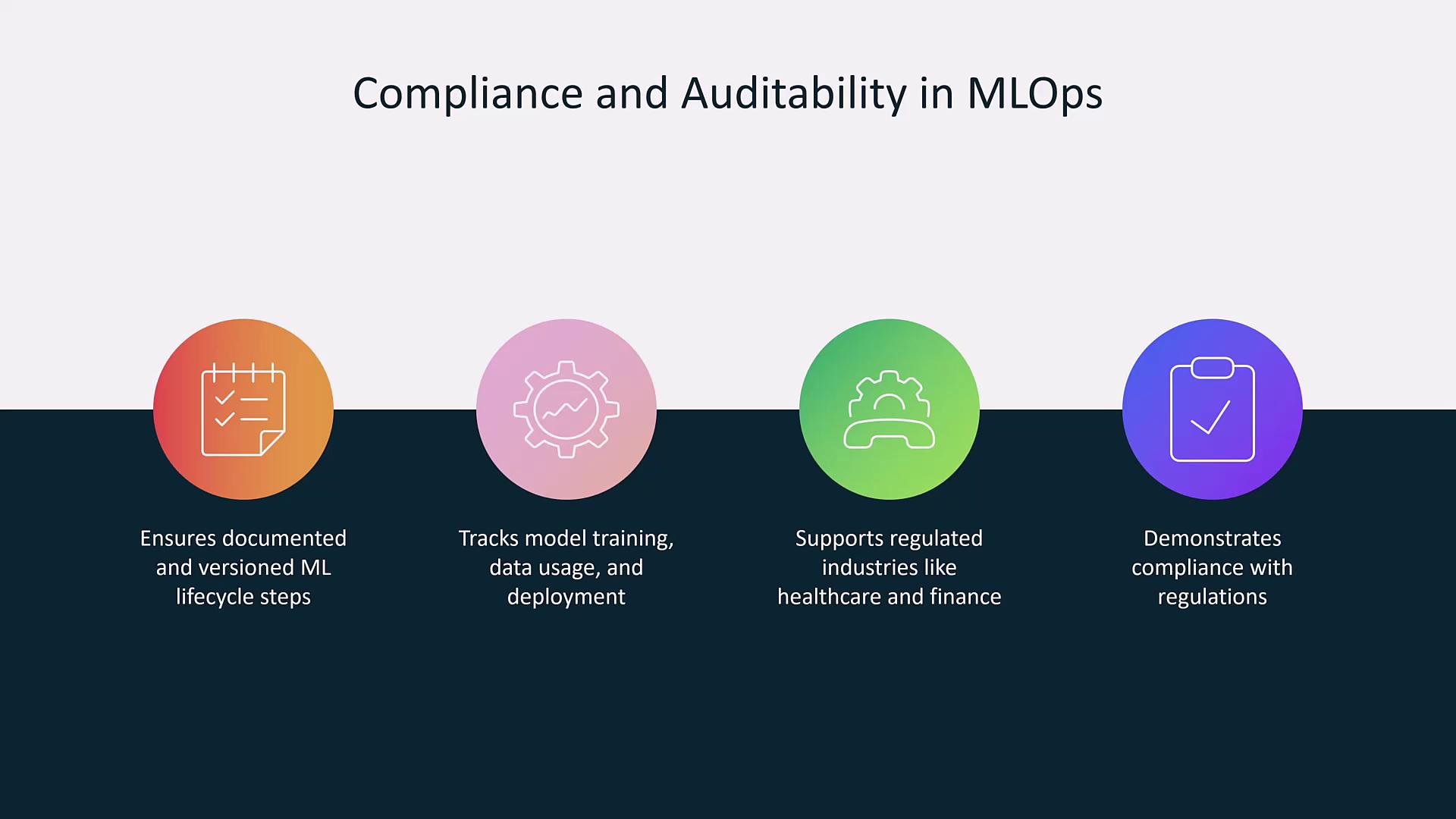
Enhancing and Evaluating Model Quality
Improving model quality is an iterative process that involves rigorous experimentation, performance tracking, and bias detection. Amazon SageMaker Studio provides an integrated development environment for experimenting with models and analyzing a variety of metrics, including class imbalance and divergence.
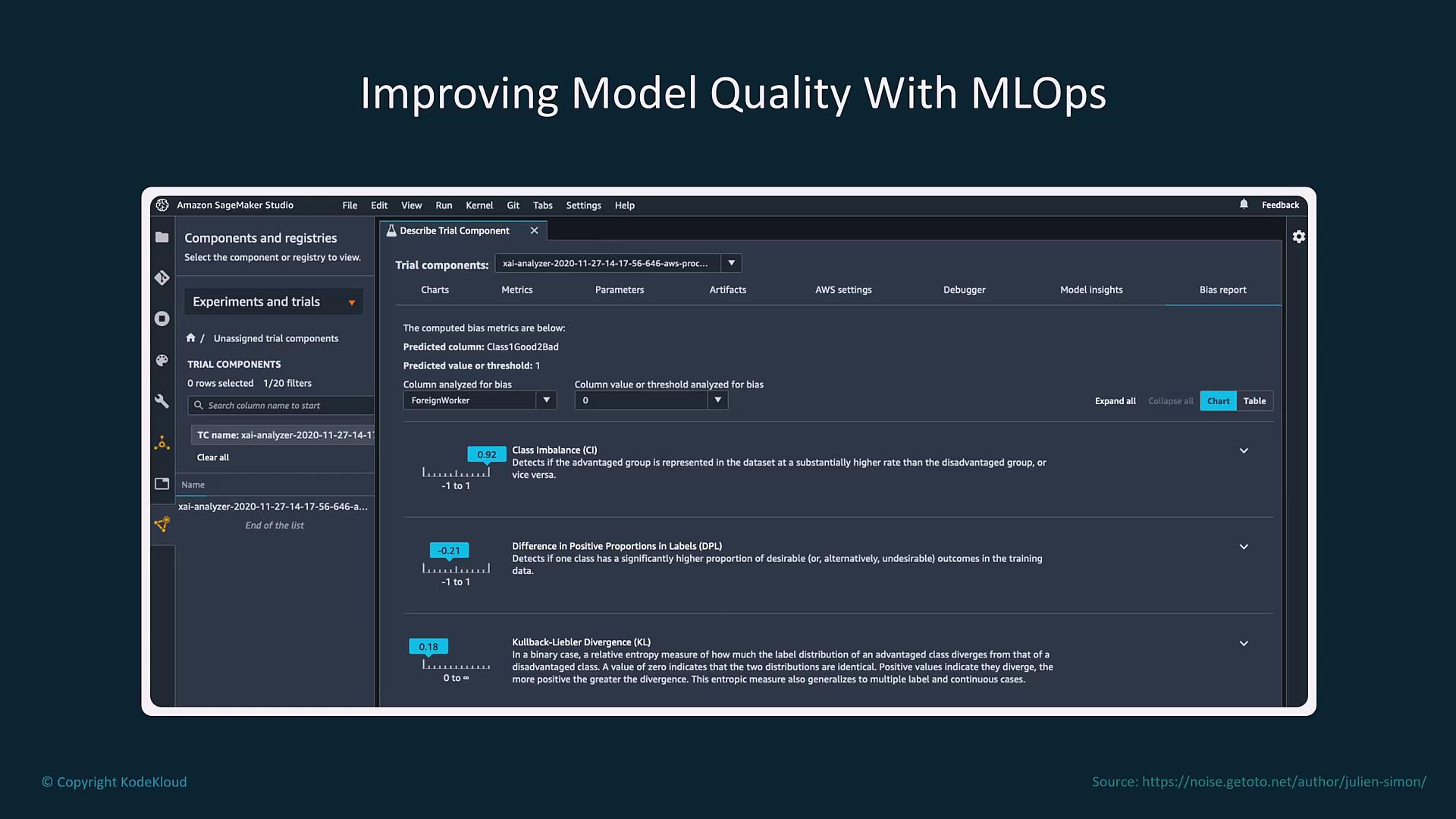
SageMaker Clarify further enhances model transparency by monitoring fairness and bias, thereby ensuring predictions are both accurate and equitable.
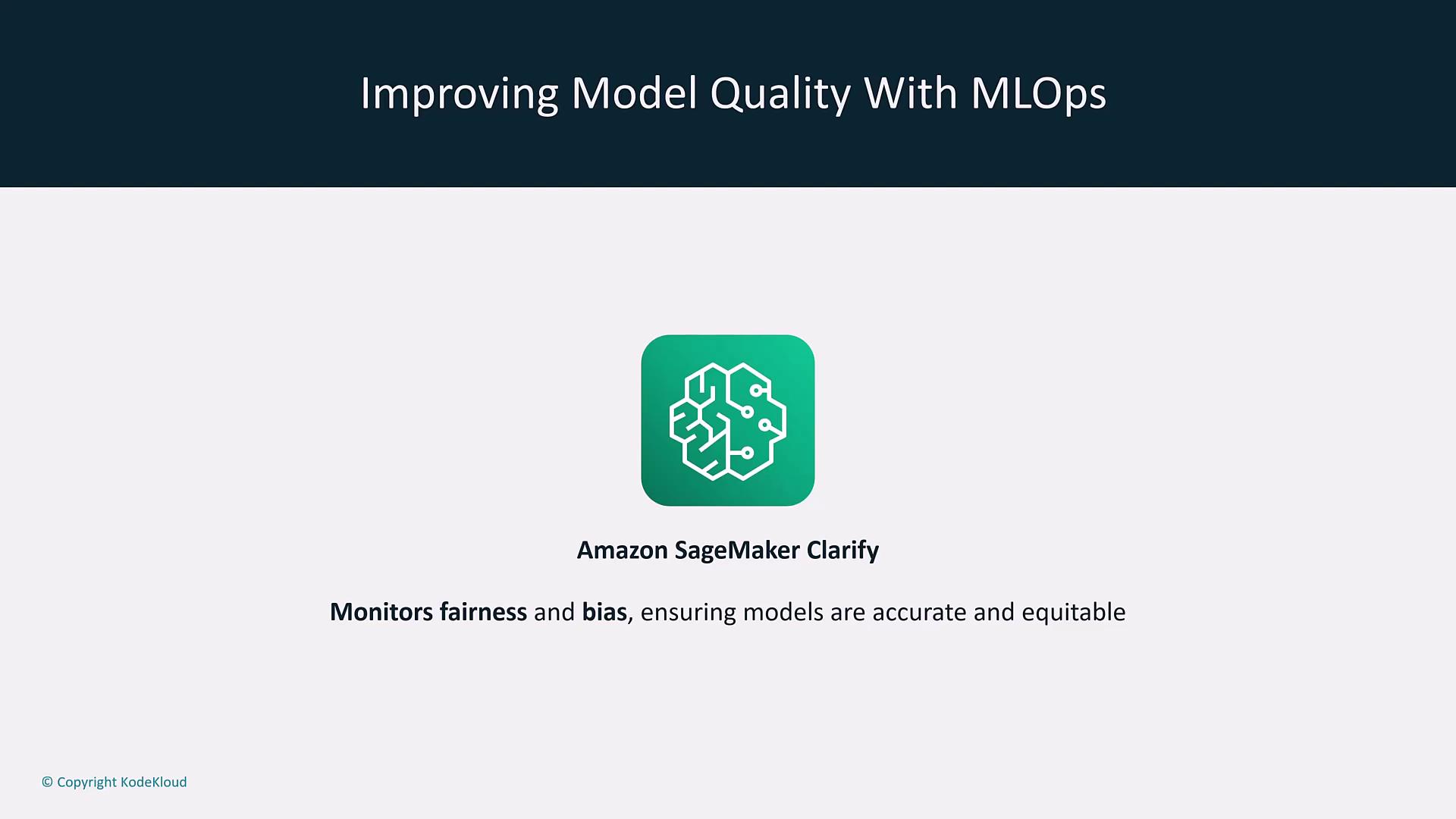
Amazon SageMaker Pipelines also integrates with tools like Git and CloudWatch, and offers workflow visualization. While AWS CodeCommit remains an option for legacy systems, newer solutions favor integrations with popular Git platforms.
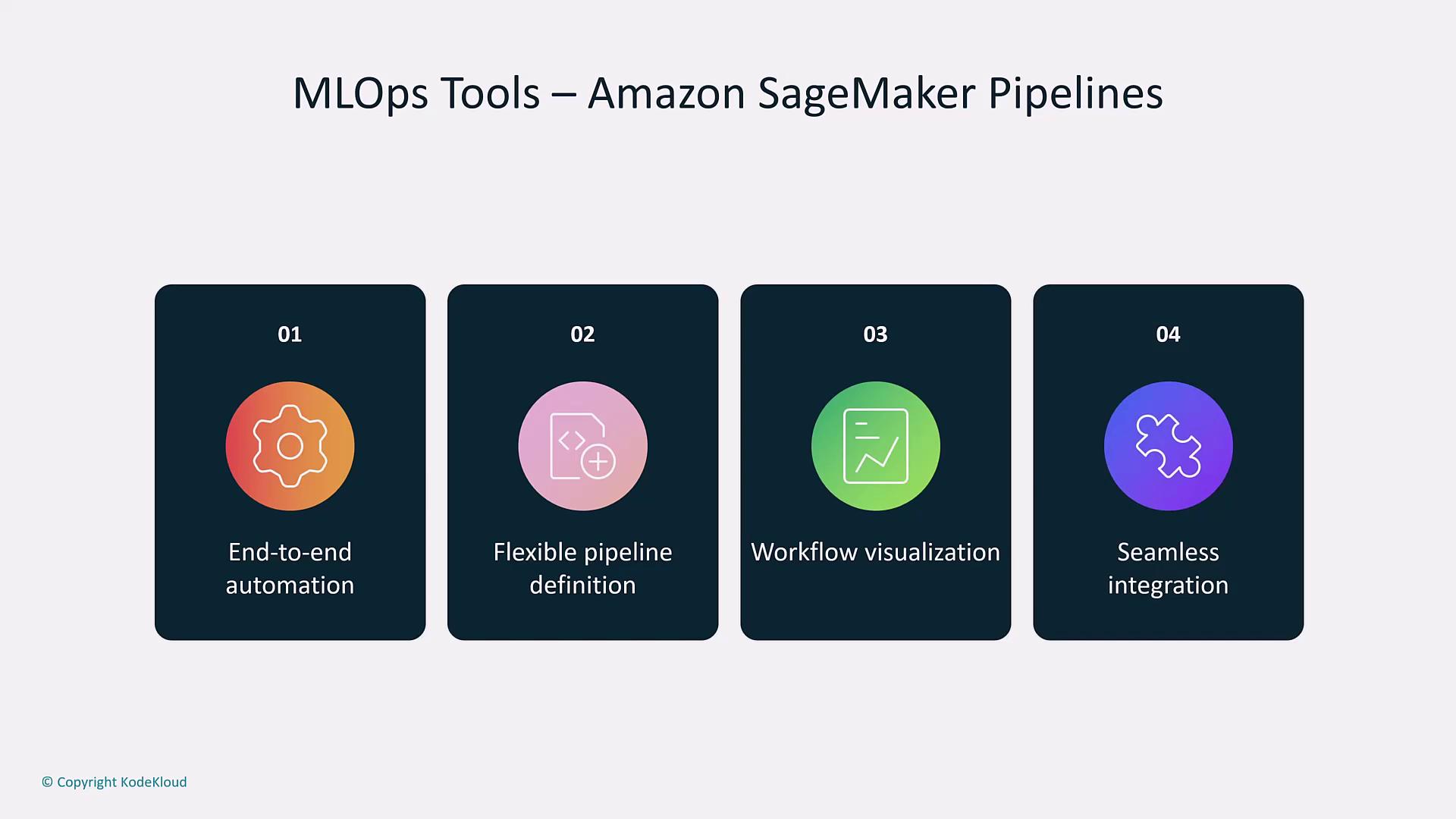
Evaluating Model Performance Metrics
Analyzing model performance is essential to validating and refining your machine learning solutions. Common performance metrics include:
| Metric | Description | Importance |
|---|---|---|
| Confusion Matrix | Summarizes predictions vs. actual outcomes (true positives, false positives, false negatives, true negatives). | Foundation for calculating accuracy, precision, and recall. |
| Accuracy | Ratio of correct predictions to total predictions. | Overall measure of model correctness. |
| Precision | Ratio of true positives to all positive predictions. | Crucial when the cost of false positives is high. |
| Recall | Ratio of true positives to actual positives. | Vital when missing positive cases (false negatives) carries significant consequences. |
| F1 Score | Harmonic mean of precision and recall. | Balances precision and recall, especially for imbalanced datasets. |
| Area Under the Curve (AUC) | Derived from the Receiver Operating Characteristic (ROC) curve. | Measures classifier performance from 0.5 (random) to 1 (perfect prediction). |
| Mean Squared Error (MSE) / RMSE | MSE: Average of squared differences; RMSE: Square root of MSE, in original units. | Essential for evaluating regression models, with RMSE highlighting large errors. |
Key Visualizations
Confusion Matrix
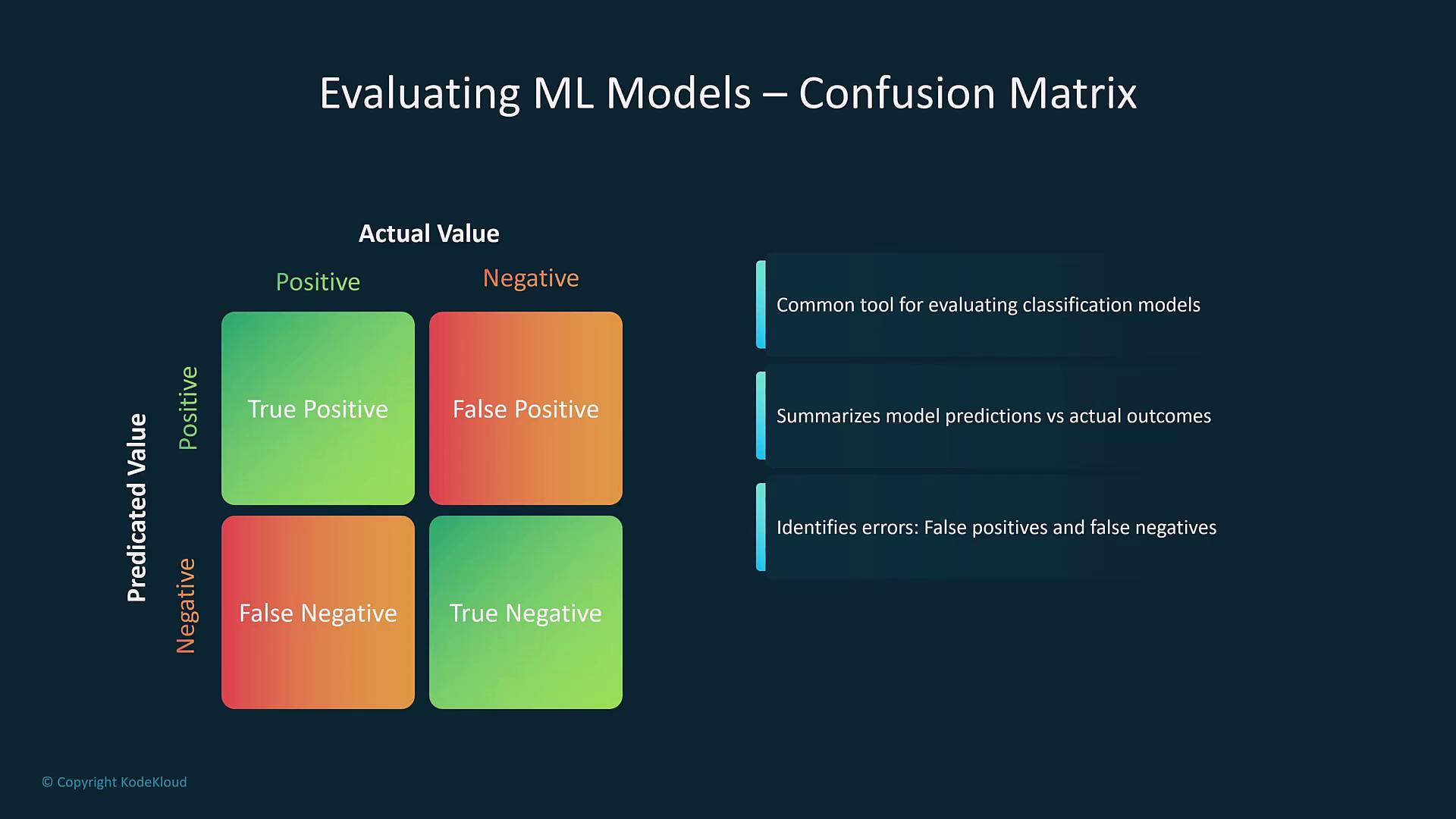
Precision, Recall, and F1 Score
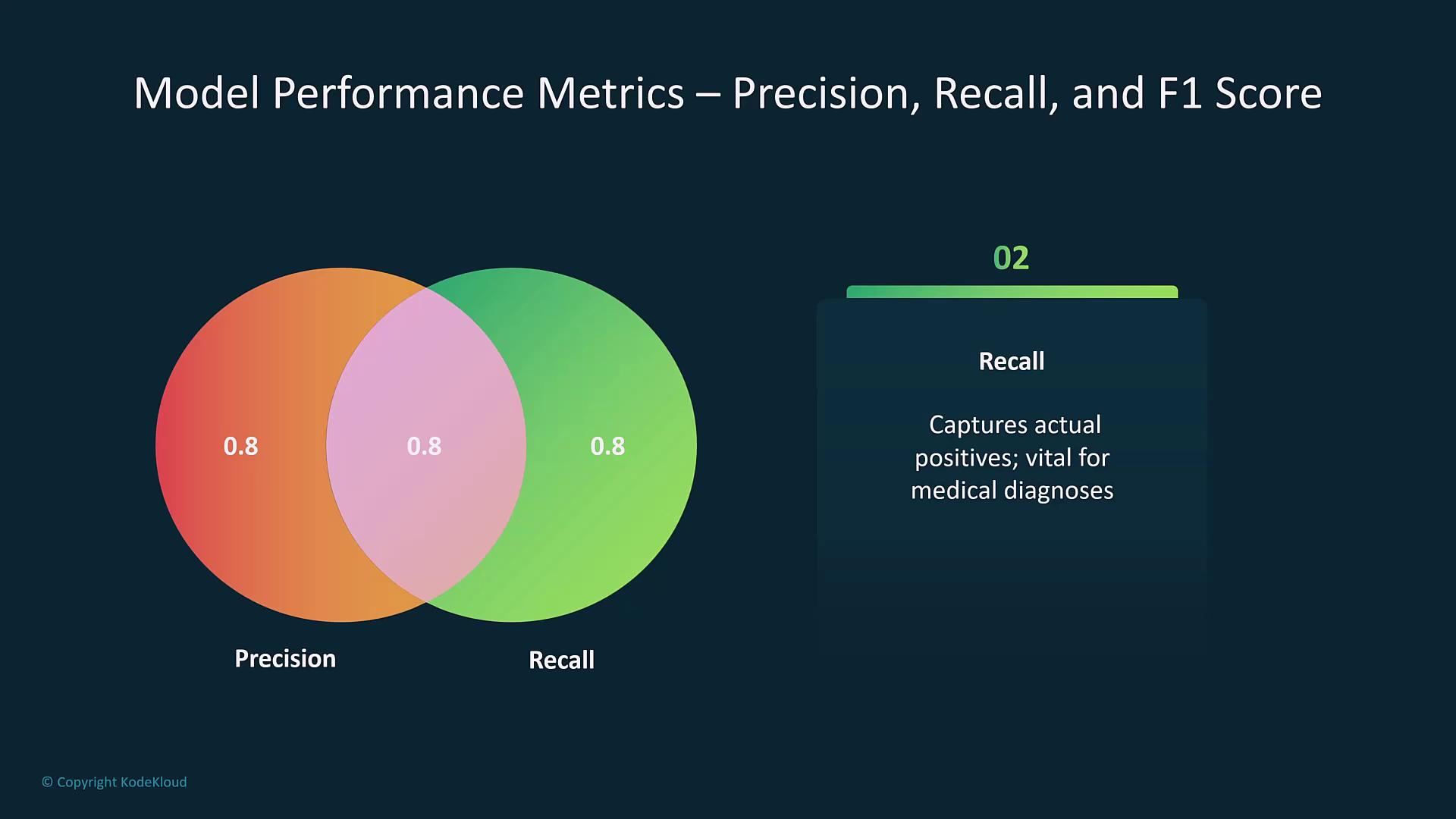

AUC and ROC Curve
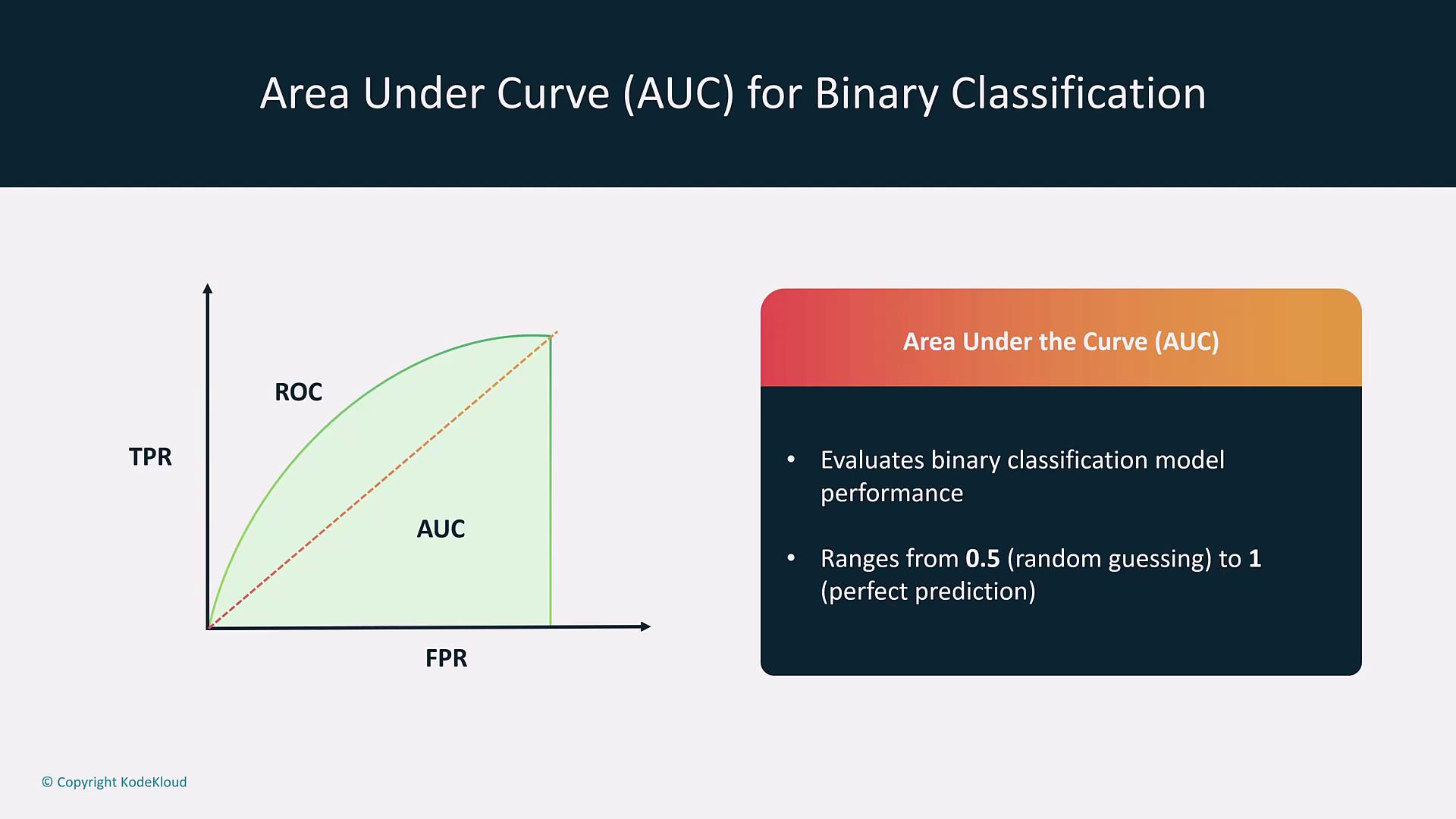
Mean Squared Error (MSE)/RMSE
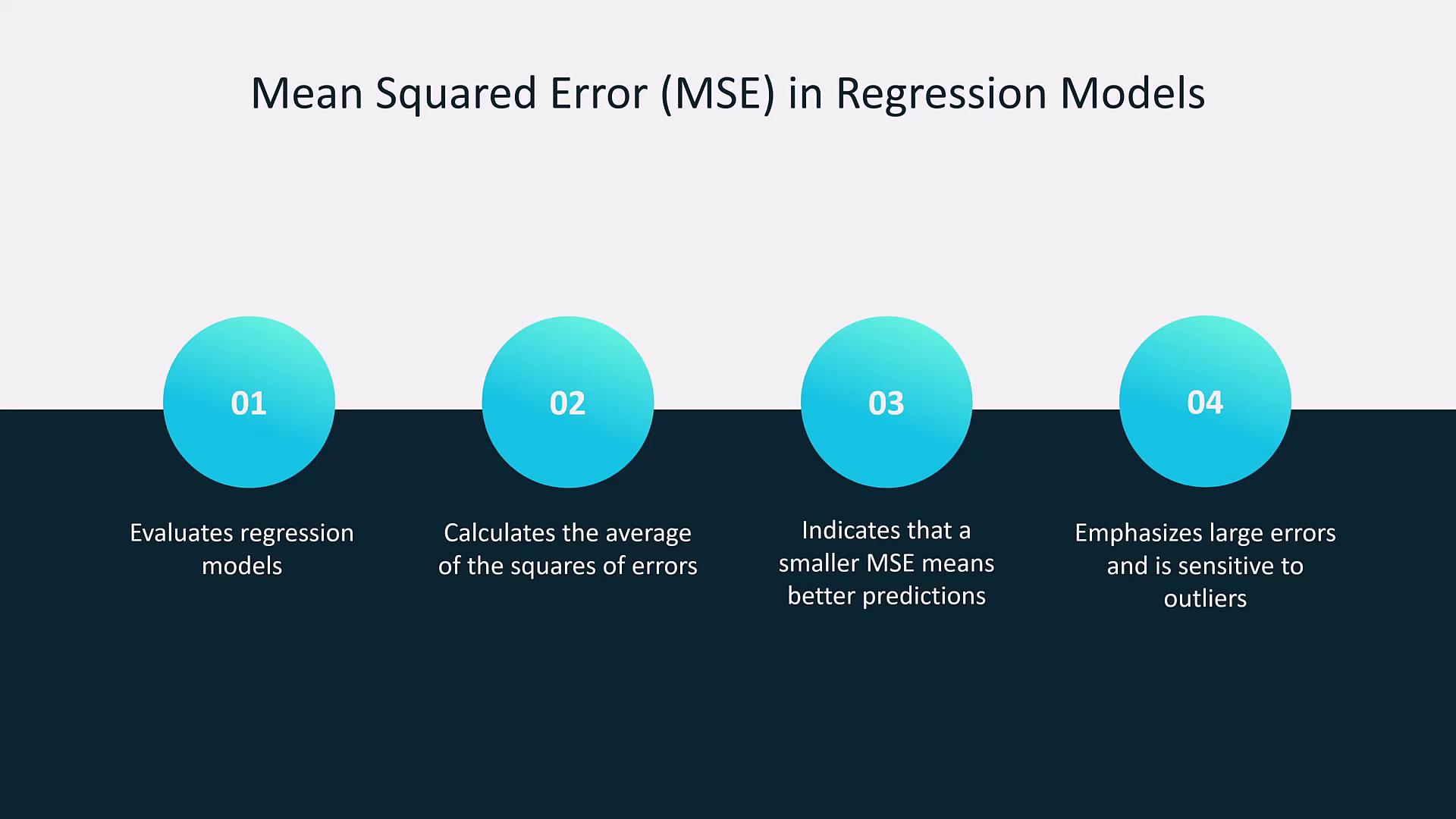
Other business metrics—including cost savings, revenue improvements, and customer satisfaction (CSAT)—should be aligned with technical performance to fully assess the return on investment of machine learning initiatives.
Additional Tools for MLOps
MLOps leverages a range of AWS and third-party tools to support model lifecycle management and automation:
Monitoring & Alerts:
Tools like Amazon SageMaker Model Monitor and Amazon CloudWatch track performance metrics and trigger alerts based on defined thresholds.Serverless Orchestration:
AWS Step Functions orchestrate serverless workflows, seamlessly integrating with Lambda functions and automating data processing pipelines.
![]()
These tools, when combined, form a comprehensive framework for monitoring, maintaining, and continuously improving your machine learning models.
Conclusion
This lesson has explored the fundamental aspects of MLOps—from automating pipelines and provisioning infrastructure to monitoring performance and evaluating model quality. By integrating development practices with robust version control, infrastructure as code, and automated monitoring, you can achieve reliable and scalable machine learning deployments.
We hope you found this session insightful and encourage you to explore further how MLOps can transform your AI initiatives. See you in the next lesson!
For additional resources, check out:
Watch Video
Watch video content